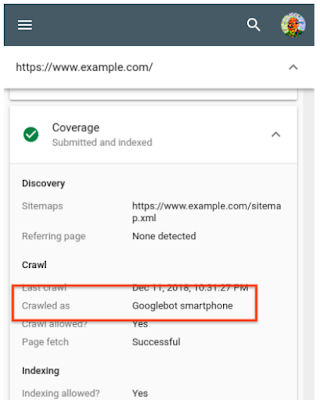On Wednesday, Google declared that more than half of pages displayed in Google search results across the world are from Google indexing and the content utilized in it. Therefore, there are high chances that the pages which you come across from a Google search are based on the manner which Google crawled and indexed the content on the page’s mobile version.
What is mobile-first indexing all about?
In simple words, mobile-first indexing is the manner in which Google crawls and indexes the internet.
Rather than focusing on a page’s desktop version, Google looks at its mobile version. Google usually notifies a site owner while moving for mobile-first indexing within Google Search Console. They will also label the site as crawled using Googlebot smartphone useragent on URL inspection tool to signify that it has been crawled. Google suggests that with this change, users need to focus on structured data and alt-text for images on mobile pages.

Significance of Mobile-First Indexing
If there is a difference between your desktop and mobile pages in content and structured data, there might be an adverse impact on your ranking. Google usually moves sites that have uniformity between mobile and desktop pages earlier for mobile-first indexing as compared to others. But since more than half of search results are indexed via mobile-first indexing, in the days to come your web pages will also be indexed also.




